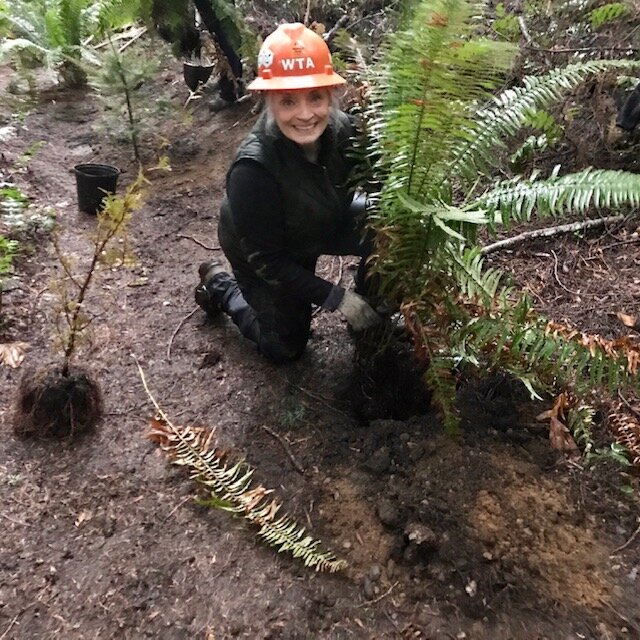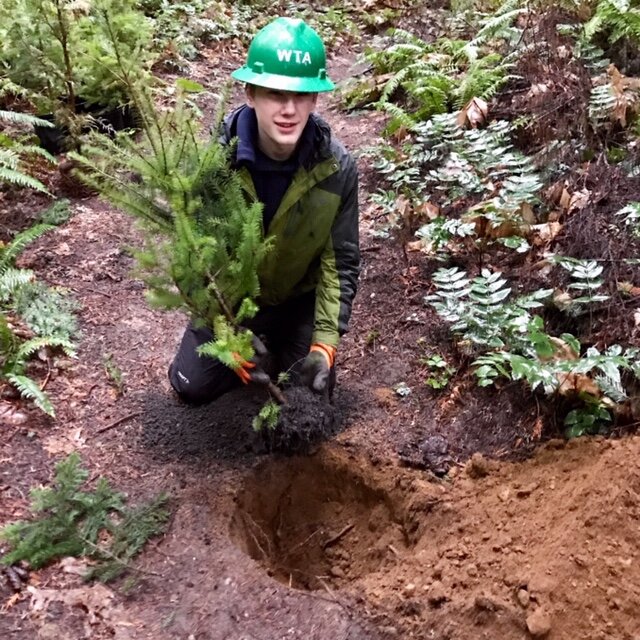Have you ever done ecological restoration work? It’s fun and rewarding. You can go back year after year and see “your” trees and plants progressing. Give it a try!
“Ecological restoration is the process of assisting the recovery of an ecosystem that has been degraded, damaged, or destroyed.” Society for Ecological Restoration, 2013.
Here are a few photos from a restoration project last Saturday, with families and kids volunteering. We planted Douglas-firs (Pseudotsuga menziesii), western redcedars (Thuja plicata), and sword ferns (Polystichum munitum) as part of trail-work in a county park.
The target forest type we were trying to match is Douglas-fir - western hemlock / low Oregon grape - sword fern, with a heavy dose of western redcedar to match somewhat-soggy existing conditions. This is a common upland ecosystem west of the Cascades.
In restoration lingo, this forest type is abbreviated as “PSME-TSHE/MANE-POMU,” from the scientific names (just the first two letters of the genus + first two letters of the species) of each of two co-dominant overstory trees and two co-dominant understory plants. Read more about this ecosystem here at pages 109-110.
We hope there will be enough rain for these plants to get started before the summer dry season.




